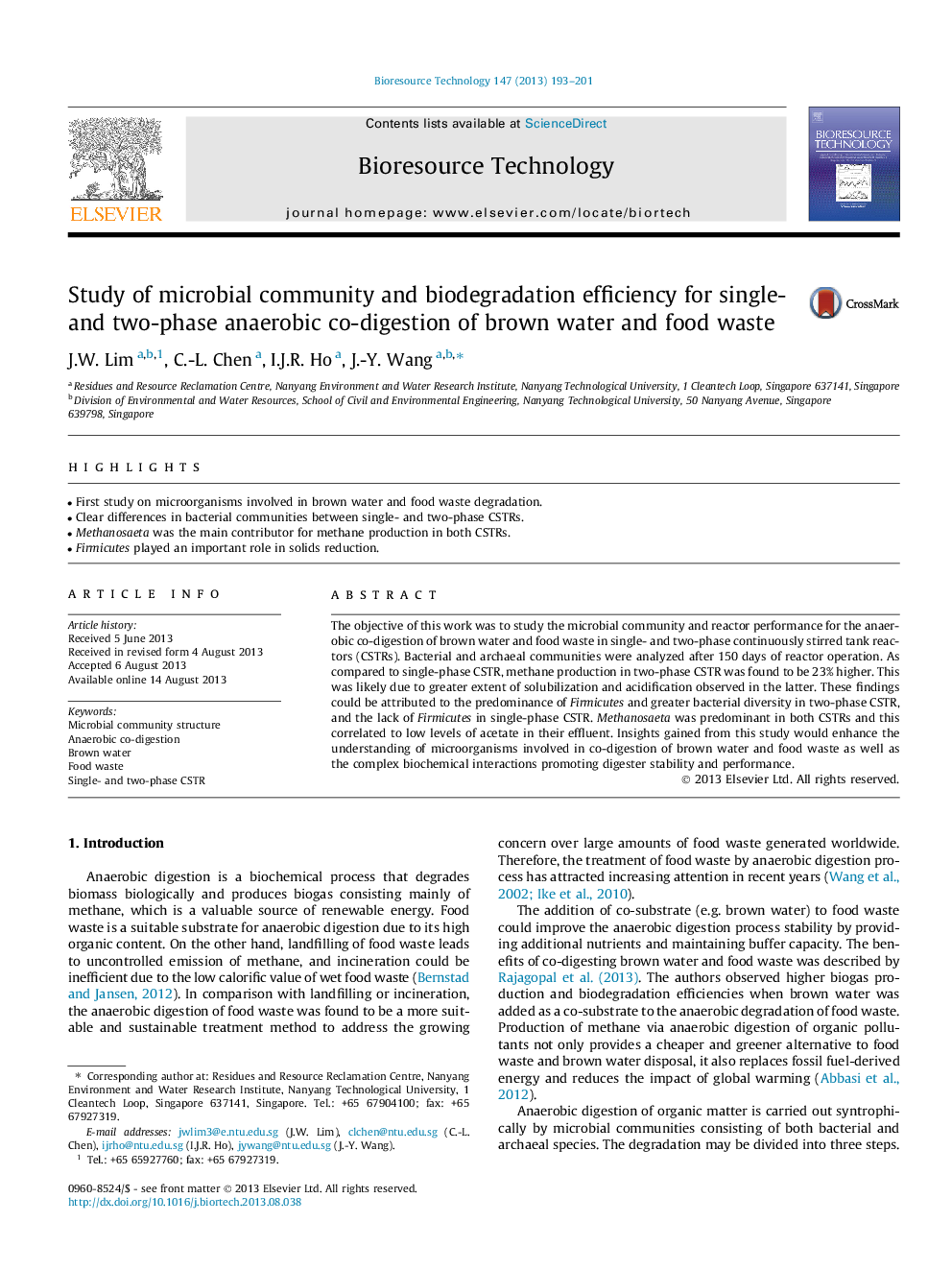| Article ID | Journal | Published Year | Pages | File Type |
|---|---|---|---|---|
| 7080297 | Bioresource Technology | 2013 | 9 Pages |
Abstract
The objective of this work was to study the microbial community and reactor performance for the anaerobic co-digestion of brown water and food waste in single- and two-phase continuously stirred tank reactors (CSTRs). Bacterial and archaeal communities were analyzed after 150Â days of reactor operation. As compared to single-phase CSTR, methane production in two-phase CSTR was found to be 23% higher. This was likely due to greater extent of solubilization and acidification observed in the latter. These findings could be attributed to the predominance of Firmicutes and greater bacterial diversity in two-phase CSTR, and the lack of Firmicutes in single-phase CSTR. Methanosaeta was predominant in both CSTRs and this correlated to low levels of acetate in their effluent. Insights gained from this study would enhance the understanding of microorganisms involved in co-digestion of brown water and food waste as well as the complex biochemical interactions promoting digester stability and performance.
Related Topics
Physical Sciences and Engineering
Chemical Engineering
Process Chemistry and Technology
Authors
J.W. Lim, C.-L. Chen, I.J.R. Ho, J.-Y. Wang,
